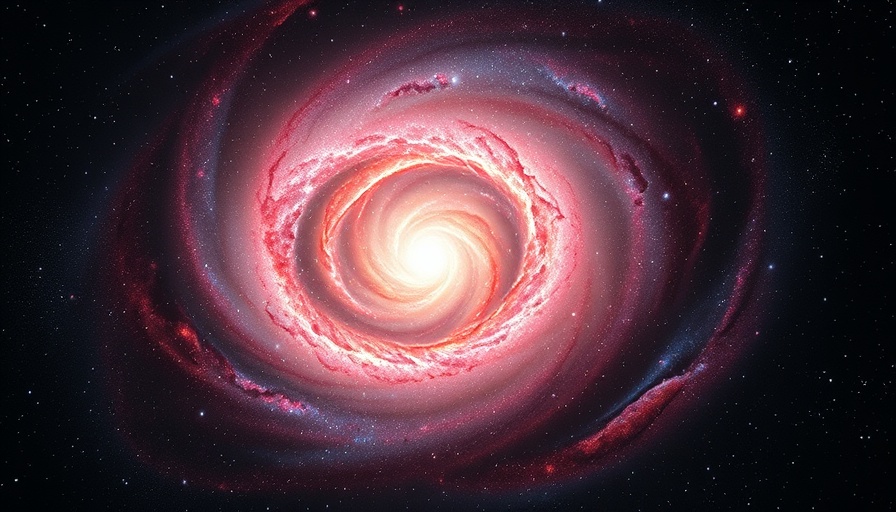
Unveiling the Universe's Secrets: MoM z14
The James Webb Space Telescope (JWST) is not just a technological marvel; it’s a groundbreaking tool reshaping our understanding of the universe. Recently, it made an extraordinary discovery by identifying the most distant galaxy ever observed, dubbed MoM z14. This galaxy emerged just 280 million years after the Big Bang, breaking the previous record-holder that existed 300 million years post-Big Bang, known as JADES-GS-z14-0.
The Significance of Redshift in Cosmic Discovery
The concept of redshift is crucial in understanding these cosmic findings. Redshift refers to the way light stretches and shifts towards the red end of the spectrum as it travels through expanding space. The greater the distance to an object, the larger the redshift. MoM z14 boasts a redshift of 14.44, highlighting its position as a beacon from the universe's infancy. This measurement reveals valuable details about the early universe and its development.
A Surprising Abundance of Early Galaxies
One of the most astounding revelations from the JWST mission is the unexpected number of bright galaxies existing at such early cosmic times. A seasoned astronomer, Pieter van Dokkum, emphasizes that the JWST team initially anticipated finding only a few early galaxies, but over 100 have been identified so far. This discovery challenges previous understandings of galaxy formation and suggests a more vibrant universe than previously thought.
Impact on Our Cosmic Perspective
This finding not only underscores the JWST's capabilities but also invites us to ponder profound questions about the universe. As we learn about these early cosmic structures, we gain a deeper understanding of the formation of galaxies, stars, and, ultimately, the very fabric of the cosmos. The research on MoM z14 contributes to an ongoing narrative of cosmic discovery that illuminates our past and hints at what lies ahead.
Cosmic Reflection: What This Means for Humanity
As we stand on the brink of understanding the universe’s infancy, this discovery feels both humbling and exhilarating. Knowing that MoM z14 existed during a time when Earth’s ancestors, like sharks, were already swimming the oceans, places our timeline in a cosmic context. It invites us not only to reflect on the vastness of space but also on the significance of our place within it. Each breakthrough, like the discovery of MoM z14, serves as a reminder of our pursuit of knowledge and our unending quest to understand the stars.
 Add Row
Add Row  Add
Add 




Write A Comment